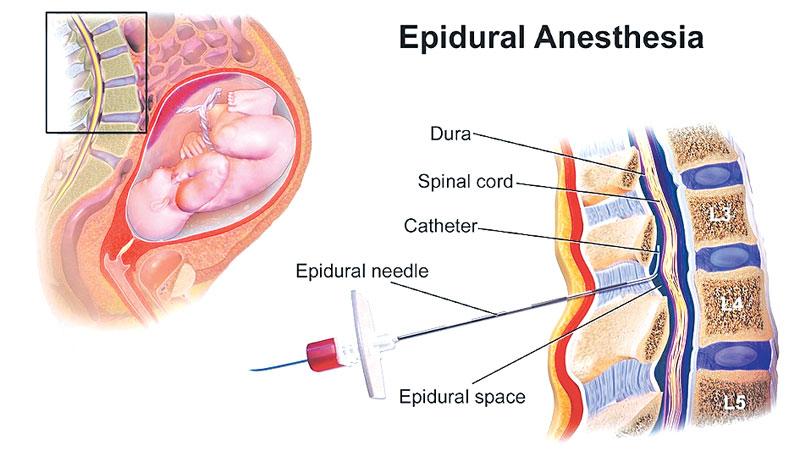
Sri Lankan mothers are often taught from an early age to fear going into labour. But pain-free labour is a possible goal for the majority of mothers.
Labour is an emotional experience. It involves both physiological and psychological mechanisms. Pain relief in labour is complex and often challenging.
 Labour pain is ranked high on the pain rating scale. It is well documented that pain scores are higher in the first pregnancy, especially, if there has been no antenatal education.
Labour pain is ranked high on the pain rating scale. It is well documented that pain scores are higher in the first pregnancy, especially, if there has been no antenatal education.
During the early stage of labour with each uterine contraction, pressure is transmitted to the cervix causing stretching and distension and activating the pain pathway.
In the later stage it is due to stretching, distension, reduced blood flow (Ischaemia) and injury at the pelvic floor and vagina. The intensity of labour pain correlates well with the intensity, duration and frequency of uterine contraction.
The aim of pain relief in labour is to render mother relatively pain free while still able to participate in the birth experience. There are few pain relief options currently available in Sri Lanka, e.g.
Pethidine (an opioid), Entonox gas and Epidural
What is Pethidine?
Pethidine is a synthetic opioid pain medication. It is usually given by intramuscular route. It takes about 20 minutes to work and the effect lasts 2-4 hours. It crosses the placenta and can affect the baby’s breathing. It will not completely take the pain off the contractions.
But, it can make mother relax enough to help her cope better with contractions. This is the most popular method of pain relief in Sri Lanka.
Entonox is a mixture of half oxygen and half nitrous oxide. It’s also known as “laughing gas”. Mother breathes Entonox using a mouthpiece or mask which she holds herself. It’s fast acting and easy to use. She controls how and when she uses it. The effects wear off quickly once she stops inhaling. It’s safe for the baby. Mother or baby does not need any extra monitoring. But, it may make her feel drowsy, lightheaded or nauseous.
It’s the most effective form of pain relief during labour. It is a regional anaesthesia which affects the lower part of the body. This is performed by an anaesthetist. Epidural is a special form of injection that allows to place a thin plastic tube called epidural catheter near the nerves in the lower back blocking the pain fibers. Catheter allows further top-up doses of pain relieving medications. An anaesthetist will stay with the mother all the time during her delivery.
What is an Epidural?
Most of the women find that they are completely pain free. An epidural can allow mother to rest, relax, get focused and give her the strength to move forward as an active participant in her birth experience. There are no sedating side effects. If the caesarean section becomes necessary, the epidural catheter can be used to provide anaesthesia while the patient remains awake and comfortable. The drugs in the epidural is unlikely to affect the baby. Most women can have an epidural. But, it has to be avoided in certain medical conditions, e.g: previous back operations, spinal cord problem, problems with blood clotting, having an infection on the back.
Epidural is very safe and lots of women have it every year all around the world. But, sometimes epidural may not work well. The other problems include: dropping blood pressure, nausea, itching. There is a small chance to get a severe headache after an epidural. The risk of damaging a nerve which may cause a numb patch on the leg is extremely rare. Infection and blood clot in the back are also uncommon. Entonox and Epidural anaesthesia for labour pain is currently available in most of the teaching hospitals in Sri Lanka.
(The writer is Senior Registrar in Anaesthesiology, Teaching Hospital Peradeniya).
